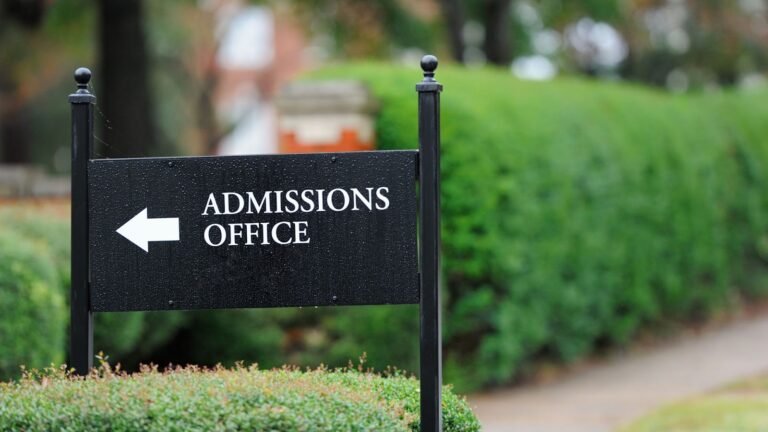Are you an Indian student eager to navigate the latest trends in Ivy League admissions and secure a spot at these prestigious institutions?
The journey to securing a spot at these top-tier institutions is as competitive as it is rewarding.
But how can you ensure your application stands out in 2025? Understanding the latest trends in Ivy League admissions can give you the edge you need to achieve your dream.
Overview of Ivy League Admissions Statistics
Understanding the numbers behind Ivy League admissions is crucial for identifying the trends in Ivy League admissions and preparing a competitive application.
For the Class of 2025, over 400,000 students applied to Ivy League schools, but only 21,177 were admitted, with an overall acceptance rate of 5.28%.
This statistic underscores the intensely competitive nature of Ivy League admissions.
Columbia and Harvard had the lowest acceptance rates at 3.66% and 3.43%, highlighting their exclusivity.
Meanwhile, Dartmouth and Cornell displayed slightly higher acceptance rates of 6.17% and 8.71%, highlighting subtle variations in admissions strategies among Ivy League schools.
Dartmouth’s 21.25% early decision acceptance rate highlights the growing emphasis on early applications in Ivy League admissions.
These statistics stress aligning with trends in Ivy League admissions by leveraging early decisions, showcasing holistic achievements, and presenting a strong narrative.
Showcasing global citizenship, unique talents, or portfolios aligned with trends helps you stand out in fierce competition.
Let’s explore the top 7 latest trends in Ivy League admissions for 2025.
Top 7 Latest Trends in Ivy League Admissions for 2025
1. The Return of Standardized Test Requirements: A Key Trend in Ivy League Admissions
The Covid-19 pandemic led to a widespread adoption of test-optional policies, which have persisted at many institutions in recent years.
However, the trends in Ivy League admissions for the 2024-25 cycle reveal a significant shift as several top schools reinstate standardized test requirements.
While institutions like the UC system remain test-blind, and UPenn, Princeton, and Columbia continue with test-optional policies, Dartmouth became the first Ivy League school to reintroduce mandatory test submissions in February.
Shortly thereafter, Brown, Yale, and Harvard followed suit. Cornell has also announced that it will require standardized test scores starting in the fall of 2026.
This shift highlights that grades and extracurriculars alone don’t fully reflect a student’s academic readiness.
Yale stated that out-of-school commitments may show leadership but not academic readiness.
Without test scores to supplement these components, admissions officers may lack critical evidence of a student’s ability to succeed at Yale University.
Another driving force behind this trend is widespread grade inflation, which has made it increasingly challenging to differentiate students based on GPAs.
This evolving focus on standardized tests reflects one of the most critical trends in Ivy League admissions for 2025 and beyond.
More schools, including Princeton and UPenn, are expected to reinstate standardized testing requirements.
For students aiming to align with these trends in Ivy League admissions, it is essential to prioritize preparation for standardized tests such as the SAT or ACT.
Setting and achieving goal scores aligned with target schools is critical for success.
Additionally, some institutions, like Yale, allow applicants to submit AP or IB scores in place of SAT or ACT scores, offering flexibility for students with strong academic credentials.
Prospective applicants should carefully review the specific requirements of their desired schools and prepare well in advance to meet these evolving standards in Ivy League admissions.
2. The Rise of the New Ivies: A Notable Trend in Ivy League Admissions
One of the emerging trends in Ivy League admissions is the decline in applications to Ivy League schools, driven by increasing scrutiny and historically low acceptance rates.
In response, a new group of elite institutions, informally known as the “New Ivies,” has gained prominence as academically rigorous competitors.
Schools like Vanderbilt, Rice, Duke, Emory, WashU, and Notre Dame have seen dramatic application increases and declining acceptance rates over the past decade.
For instance, NYU’s acceptance rate dropped from 35% in 2013 to just 8% in 2024, while Rice University’s applicant pool more than doubled, growing from 15,408 in 2013 to 32,473 in the 2023–24 cycle.
Renowned state universities like UT Austin and the University of Michigan are acclaimed for their top programs and faculty.
These universities offer quality education, large student bodies, strong alumni networks, and vibrant sports cultures.
This trend highlights how the rise of second-tier schools is reshaping the landscape of higher education.
As these schools grow in popularity and prestige, their admissions processes have become increasingly competitive.
Getting into schools like Vanderbilt or Rice now demands the same effort as applying to Ivy League schools like Columbia or Princeton.
Understanding these trends in Ivy League admissions helps students expand options and refine strategies for success.
3. Fewer Applications to Ivy League Schools: A Shifting Trend in Ivy League Admissions
One of the most intriguing trends in Ivy League admissions is the anticipated decline in applicant numbers as top schools reinstate standardized testing requirements.
During the test-optional era, many students whose scores were below the median submitted applications, leading to historically large applicant pools.
For example, the Class of 2027 saw record-breaking numbers, with Penn, NYU, and Yale receiving more than 59,000, 120,000, and 52,000 applications, respectively.
This surge in underqualified applicants caused acceptance rates to drop, as the number of available seats stayed the same.
As schools like Dartmouth, Brown, Yale, and Harvard reintroduce testing requirements, a reversal of this trend is emerging.
Early data from the Class of 2029 admissions cycle offers a glimpse of this shift.
Brown University received 5,048 early decision applications, accepting 906 students.
This marked an early decision acceptance rate of 17.9%, three percentage points higher than the Class of 2028’s 14.4%.
This marks the highest early decision rate since 2023, due to 1,200 fewer applications.
Similarly, Yale reported a 14% decrease in early applications, dropping from 7,856 to 6,754.
Reintroducing testing requirements is shrinking applicant pools and slightly raising acceptance rates.
This trend signifies a potential shift in the competitiveness of Ivy League admissions for future applicants.
Students and parents should focus on strong test scores and align strategies with Ivy League admission trends to boost acceptance chances.
4. A Push for Greater Socioeconomic Diversity at Top Universities
The 2023 Supreme Court ruling on affirmative action has driven universities to prioritize socioeconomic diversity.
In response, many top schools have implemented tuition remission programs for families below certain income thresholds.
Duke and Yale offer free tuition to families earning under $150,000 annually.
Additionally, institutions like MIT and Stanford have intensified recruitment efforts in rural areas, aiming to attract students from diverse geographic and socioeconomic backgrounds.\
That said, relocating to a rural area in hopes of increasing admission chances is not a guaranteed strategy.
Instead, students should focus on making a meaningful impact in their current communities, regardless of location.
Rural students can stand out by highlighting their community engagement on college applications.
5. The Video Introduction
Over the past five years, the surge in applications to top schools has made it increasingly difficult for institutions to offer interviews to all applicants.
In response, schools like Brown and UChicago have introduced optional video interviews, providing a more personalized way to evaluate candidates.
These video submissions are designed to be casual and authentic, allowing students to reflect on their candidacy, background, and interest in the school.
Video interviews are expected to gain popularity as schools adopt creative, holistic evaluation methods.
6. Embrace Your Story
Your background and experiences hold greater significance in today’s admissions landscape than ever.
After the Supreme Court’s ruling, applicants are urged to showcase their unique journeys and contributions to campus diversity in essays and recommendations.
This shift has prompted schools to explore new ways to foster diversity, offering international applicants fresh opportunities to showcase their distinct backgrounds and perspectives.
7. Creativity and Innovation in Portfolios
Ivy League schools are increasingly valuing creativity and innovation in student applications.
A standout portfolio showcasing your artistic, technical, or entrepreneurial achievements can set you apart from other candidates.
Whether it’s a design project, coding innovation, published research, or artistic creation, your portfolio should reflect your unique talents and passion.
This trend highlights that Ivy League admissions value creativity and contributions beyond academics.
A well-crafted portfolio demonstrates originality, problem-solving skills, and the ability to innovate—qualities that Ivy League institutions are eager to see in their students.
How Essai Empowers Your Ivy League Journey
At Essai, we specialize in simplifying the Ivy League admissions process for students like you.
We provide personalized guidance tailored to your unique strengths and goals.
Essai ensures every aspect of your application showcases your potential, from crafting compelling essays and building impressive portfolios to selecting impactful extracurriculars and preparing for interviews.
With expert mentorship and a strategic approach, we help you stand out in the competitive landscape of Ivy League admissions, turning your aspirations into achievements.
Conclusion
The trends in Ivy League admissions are evolving rapidly, emphasizing holistic evaluation, creativity, and global citizenship.
For Indian students, understanding these trends and aligning your application accordingly can make all the difference.
From early decision strategies to crafting compelling essays, each aspect of your application must reflect your unique strengths and aspirations.
At Essai, we specialize in providing personalized mentorship to help you navigate the complexities of Ivy League admissions.
At Essai, we specialize in providing personalized mentorship to help you navigate the complexities of Ivy League admissions.
Our experts ensure your application stands out, from essay writing to recommendation guidance.
Ready to take the next step? Contact Essai today and let us help you achieve your Ivy League dreams!
FAQs
Q. How can Essai help with Ivy League applications?
A: Essai provides expert guidance on essays, recommendations, and overall application strategy to maximize your chances.
Q. What makes Indian students stand out in Ivy League applications?
A: Indian students’ strong academic backgrounds, cultural diversity, and global perspectives make them standout candidates.


